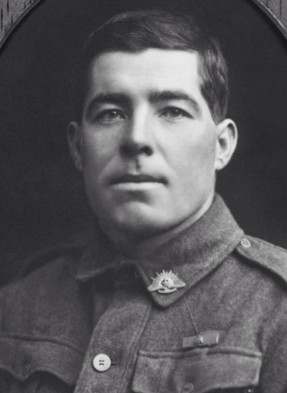
33rd BATTALION A.I.F.
Lance Corporal: 1804 John CARROLL. V.C
Born: 16th August 1891. Brisbane, Queensland. Birth Cert:
Married: 23rd April 1923. Perth, Western Australia.
Wife: Mary Caroll. nee: Brown.
Died: 4th October 1971. Hollywood, Perth, Western Australia.
Buried: Karrakatta Cemetery, Perth, Western Australia.
Father: John Carroll. (18..-1919)
Mother: Catherine "Kate" Carroll. nee: Wallace.
John was Found Guilty "at sea" on the 2nd of September 1916, of being absent without leave from Roll Call from 17:00 hrs, 29th of August until 09:30 hrs on the 30th of August 1916. He was awarded 7 days detention and forfeited 9 days pay. John disembarked at Plymouth, England and was marched in to the 11th Training Battalion on the 1st of October 1916 before proceeding overseas th France on the 21st of November 1916.

On 7/12 June 1917 at St Yves, France, during an attack Private Carroll rushed the enemy's trench and bayoneted four of the German occupants. He then noticed a comrade in difficulties and went to his assistance, killing another German. He then attacked single handed a German Machine Gun Team, killing all three of them and capturing the gun. He latter rescued two of his comrades who had been buried alive by German Shell Fire, and in spite of heavy shelling and machine gun fire he dug them out alive and saved them from certain death.
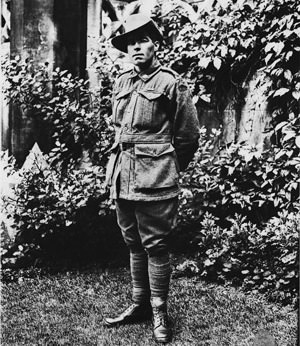
They made it to the "jump off" point but only just with some of the men from the 9th and 10th going straight over the top without stopping. The mines went up and the attack commenced behind a protective barrage. The II Anzac Corps were attacking on the right with their objective being the southern shoulder of the ridge which included Messines, the Dover and St Yves areas as far south to the east of Ploegsteert Wood.
Major General Sir John MONASH's 3rd Division had to contend with a tricky 3 mile approach out of Ploegsteert Wood and after the German gas attack, but they were not deterred. The 9th Infantry Brigade under Brigadier General: Alexander JOBSON and the 10th Infantry Brigade under Brigadier General W R NICHOLL had just made the jumping off point but some of the men did not stop, going straight into the assault from the approach march.
Their objective lay between St Yves and the Douve. The mines at Trench 127 and Trench 12 at Factory Farm were laid to aid this task. The explosions erupted a few seconds before zero hour and created craters of 200 feet in diameter, completely obliterating the German defense line as the 9th and 10th Infantry Brigades went over the top. The mine crates forced the 9th and 10th Brigades to veer to the left and right which caused some confusion with the main assault. It is testimony to the quality of training that every man knew the ground, tasks and objectives so well.
Private: 1804 John CARROLL 33rd Battalion, rushed the enemy's trench and bayoneted four of the German occupants. He then noticed a comrade in difficulties and went to his assistance, killing another German. He then attacked single handed a German Machine Gun Team, killing all three of them and capturing the gun. He later rescued two of his comrades who had been buried alive by German Shell Fire, and in spite of heavy shelling and machine gun fire he dug them out alive and saved them from certain death. John was awarded the Victoria Cross.
The German forward zone was completely engulfed and taken by the main assault. The two supporting battalions of each brigade then passed the leading battalion to continue the advance. The men were constantly re-supplied and the ridge was taken. There were many German prisoners taken during the offensive. The 3rd Division was well ahead with the 9th Infantry Brigade pushing on beyond Grey Farm, and on the right the 10th Infantry Brigade were veering left towards Septieme Barn north of Douve.
The German resistance was heavy but was generally brushed aside by tanks and artillery before the infantry had to become too involved.The 4th Bavarian Divisions Artillery had made little impact, but as the day wore on the 3rd Division and later the 4th Australian Division received many casualties from German artillery. (70% of all casualties during WW1 were from artillery).
By 9:00 am nearly 6 hours after the assault began the Germans were in disarray, but there was a major problem as the Australians received less casualties as anticipated and when ordered to dig into the ridge they had so many men, that some could not find shelter. the 35th battalion were dug in around Seaforth Farm.
The second phase of the operation was to take the Oosttaverne Line. The 3rd Australian Division would now be in reserve with the 4th Division attacking. The 9th Infantry Brigade (33-34-35-36 Bn) were near Thatched Cottage facing Warneton. The river Lys was to their right and the Ploegsteert Wood was now behind them.
Once their objectives were taken the troops consolidated. A barrage to stop and counter attack was shortened and caught three battalions which had to retire. By 9:00 pm this part of the Oosttaverne Line was abandoned. At 10:45 pm General: Alexander GODLEY ordered the 3rd and 4th Divisions to retake it. This they did by the early hours of the 8th of June.
The Battle for Messines Ridge during May-June 1917 saw 35 officers and 1,631 other ranks loose their lives.
| 33rd Battalion. AIF | 8 Officers | 382 Other ranks |
| 34th Battalion. AIF | 10 Officers | 378 Other ranks |
| 35th Battalion. AIF | 5 Officers | 431 Other ranks |
| 36th Battalion. AIF | 9 Officers | 421 Other ranks |
| 9th Machine Gun Company. AIF | 2 Officer | 17 Other ranks |
| 9th Light Trench Mortar Battery. | 1 Officer | 2 Other ranks |

John embarked for Australia on board SS A7 "Medic" on the 24th of August 1918 and disembarked in Melbourne in transit to Fremantle, Western Australia on the 15th of October 1918.

On Anzac Day 1927, Carroll was one of twenty three VC recipients at the Anzac Commemoration Service in Melbourne which was attended by HRH Duke of York (later George VI). Later that year, following a rail accident at a timber mill at Yarloop, south of Perth, his right foot was amputated. In 1956, he was a member of the Australian contingent for the VC Centenary celebrations in London.
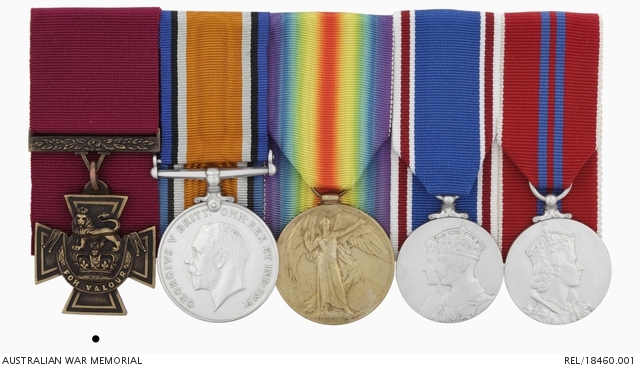
Photos (Australian War Memorial)
b. 16/08/1891 Brisbane, Australia. d. 04/10/1971 Perth, Australia.
John Carroll (1891-1971), known as “Jack”, was born on 16th August 1891 at Brisbane, Queensland, Australia. His father, also John Carroll, was born in Tipperary, Ireland. He married Catherine “Kate” nee Wallace on 23rd December 1888, also born in Tipperary. They emigrated to Brisbane, Queensland before 1891, moved to Donnybrook, Western Australia in 1893 and then to Yarloop. In 1905 they settled in Kurrawang, where he and his son John were labourers with the Goldfields Firewood Supply Company. His father was killed in an accident in 1919. John had six siblings, three of each.
After working with his father as a labourer, he became a miner at the Kalgoorlie gold mines and at nearby Kurrawang. He was a good athlete and was a prominent member of the local Australian rules football club. He enlisted with the AIF at Kalgoorlie, Western Australia on 27th April 1916, understating his age by one year. He was posted to 44th Battalion (2nd Reinforcements) at Blackboy Hill, Northam, Western Australia. He embarked for England from Fremantle aboard HMAT A28 “Miltiades” on 9th August.
Having arrived in Plymouth, he joined 11th Training Battalion on Salisbury Plain on 1st October followed by 3rd Division Amalgamated Training Battalion. He transferred to 33rd Battalion on 14th November. He left Southampton on 21st November and headed to France and the Western Front. He was charged with being absent without leave for failing to appear on parade on 3rd May 1917 and was awarded two days Field Punishment.
On 7th–12th June 1917 at St. Yves, Belgium, during the Battle of Messines, Private Carroll rushed the enemy's trench and bayoneted four of the occupants. He then noticed a comrade in difficulty and went to his assistance, killing another of the enemy. Next, he single-handedly attacked a machine-gun team, killing three of them and capturing the gun. Later, two of his comrades were buried by a shell; in spite of heavy shelling and machine-gun fire, he managed to rescue them.
John was wounded in the chest near Messines on 9th July and was evacuated to 14th General Hospital, Boulogne on 10th July and from there to No 1 Convalescent Unit. He forfeited a day’s pay for being in café against orders on 18th July. He rejoined his unit in August and was promoted to Lance Corporal in September. He was then shot in the right buttock near Passchendaele on 12th October and evacuated to England, where he was treated at 2nd Birmingham War Hospital from 21st October.
On 27th January 1918 he was assaulted while returning from Warminster, resulting in a fractured left fibula, and was discharged to No 1 Command Depot on 6th March. The VC was presented by King George V at Buckingham Palace on 23rd March 1918. John left England aboard HMAT D21 “Medic” on 24th August with fellow VCs, John Dwyer, Reg Inwood, Jorgen Jensen, Thomas Kenny, Leonard Keysor, Stan McDougall, Walter Peeler, William Ruthven and John Whittle. They were all returned home to assist in recruiting for the all-volunteer AIF.
John worked as a guard on the Kurrawang line in Western Australia, then worked as a railway truck examiner at Hoffman’s Mill, Yarloop, Western Australia. On 1st November 1927, he slipped while boarding a train during shunting operations. His right foot was crushed and it had to be amputated. He continued to work as a labourer for many years afterwards. He married Mary Brown on 23rd April 1923 at the St Mary’s Cathedral, Perth. They had no children.
John attended several commemorative events including the ANZAC Service on 25th April 1927 in Melbourne in the presence of the Duke of York (later King George VI). He also attended the 1929 lunch at Government House, Perth to honour VCs unable to travel to London for the VC Reunion. He also attended the 1956 VC Centenary Celebrations at Hyde Park on 26th June. John died at the Repatriation General Hospital, Hollywood, Perth on 4th October 1971. He was buried in Karrakatta Cemetery (one of nine VCs buried there).
In addition to the VC he was awarded the British War Medal 1914-20, Victory Medal 1914-19, George VI Coronation Medal 1937 and Elizabeth II Coronation Medal 1953. After his death his medals were bequeathed to the Kalgoorlie Returned Services League Club. The VC was too valuable to display and was held in a safe in Kalgoorlie. In October 1989 the medals were presented to the Australian War Memorial. The family objected, claiming they were not consulted, but the presentation went ahead.
LOCATION OF MEDAL: AUSTRALIAN WAR MEMORIAL, CANBERRA.
BURIAL PLACE: KARRAKATTA CEMETERY, PERTH, AUSTRALIA.
Private: 1875 George Mustey 34th Battalion AIF was a Horse Trainer from Blackboy Hill, Western Australia.

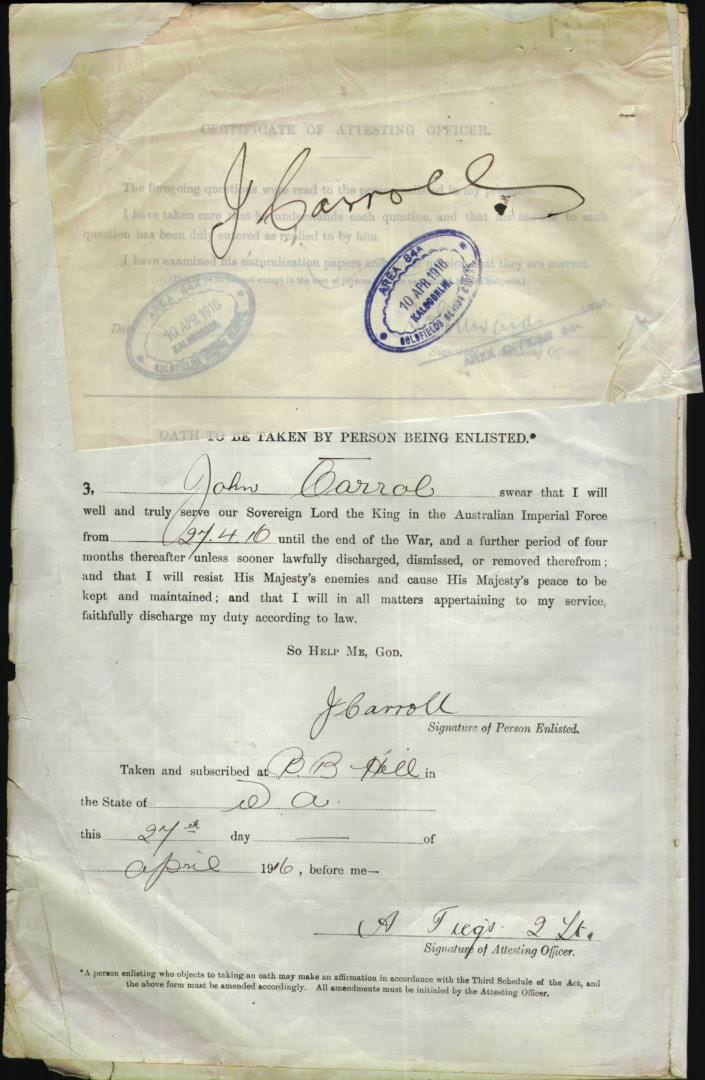
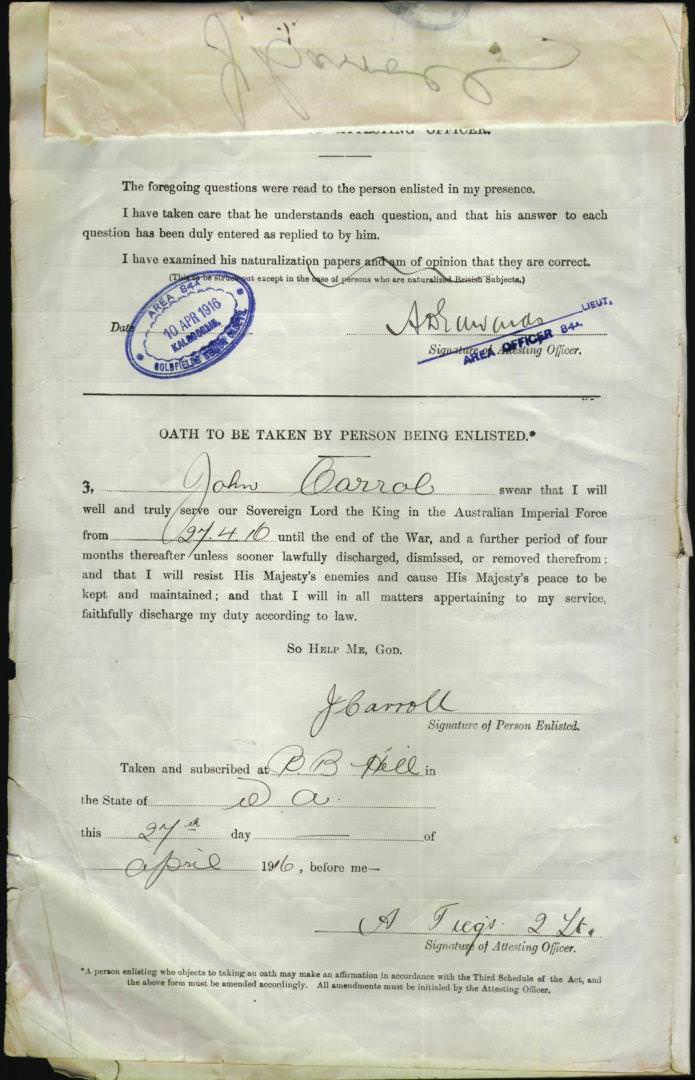
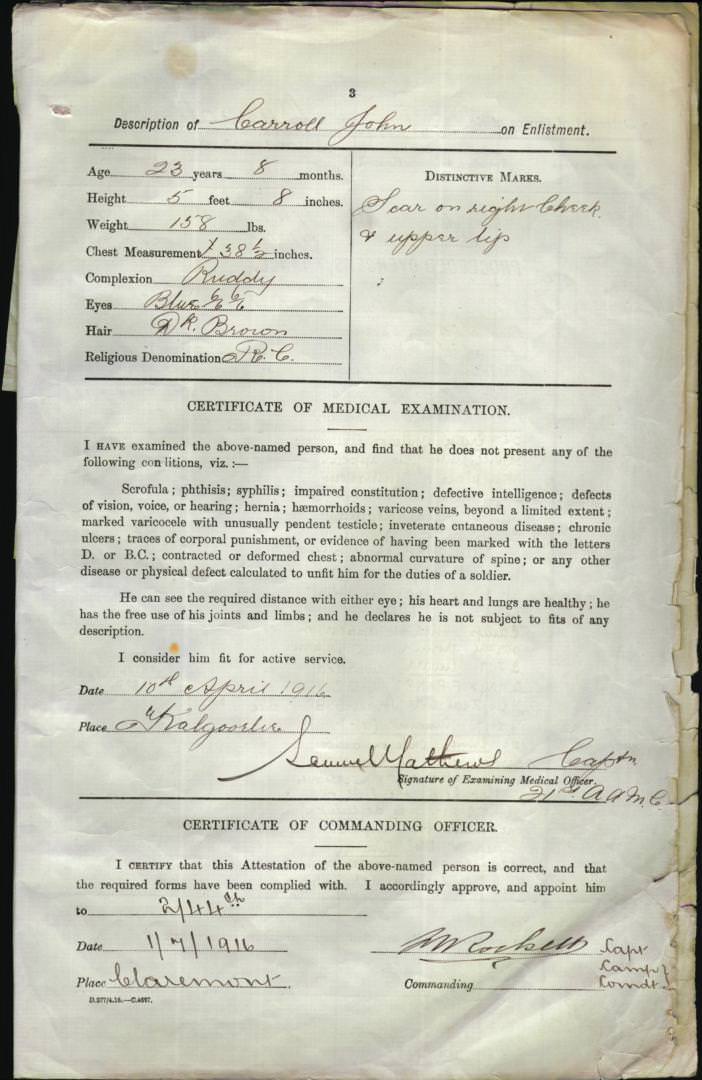
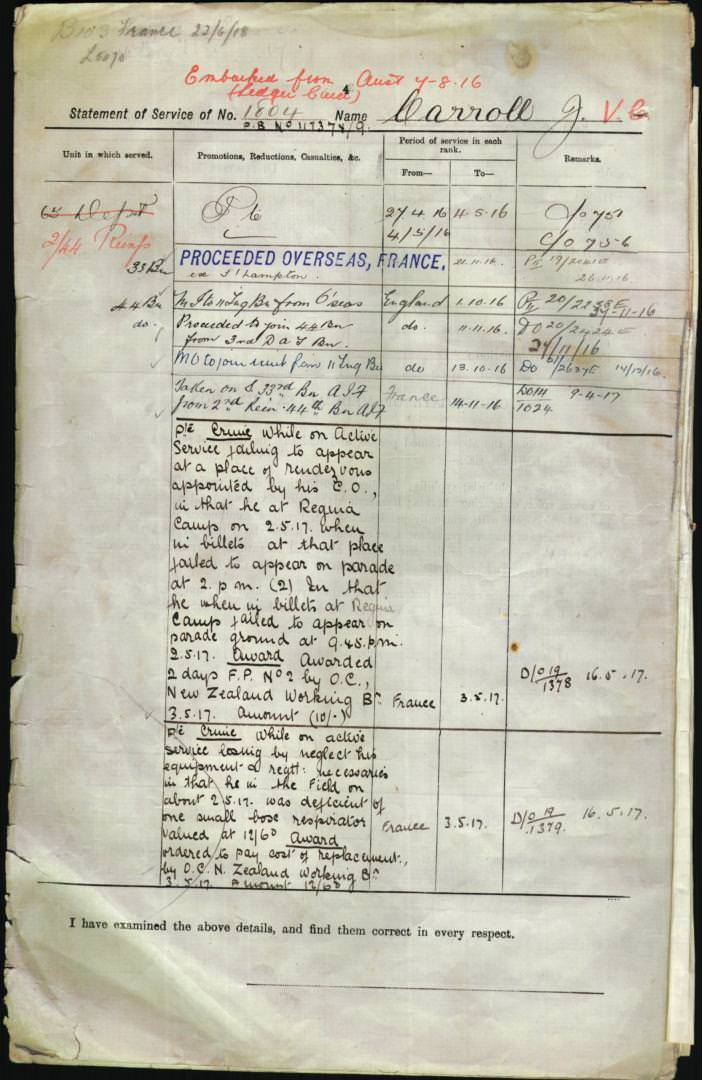
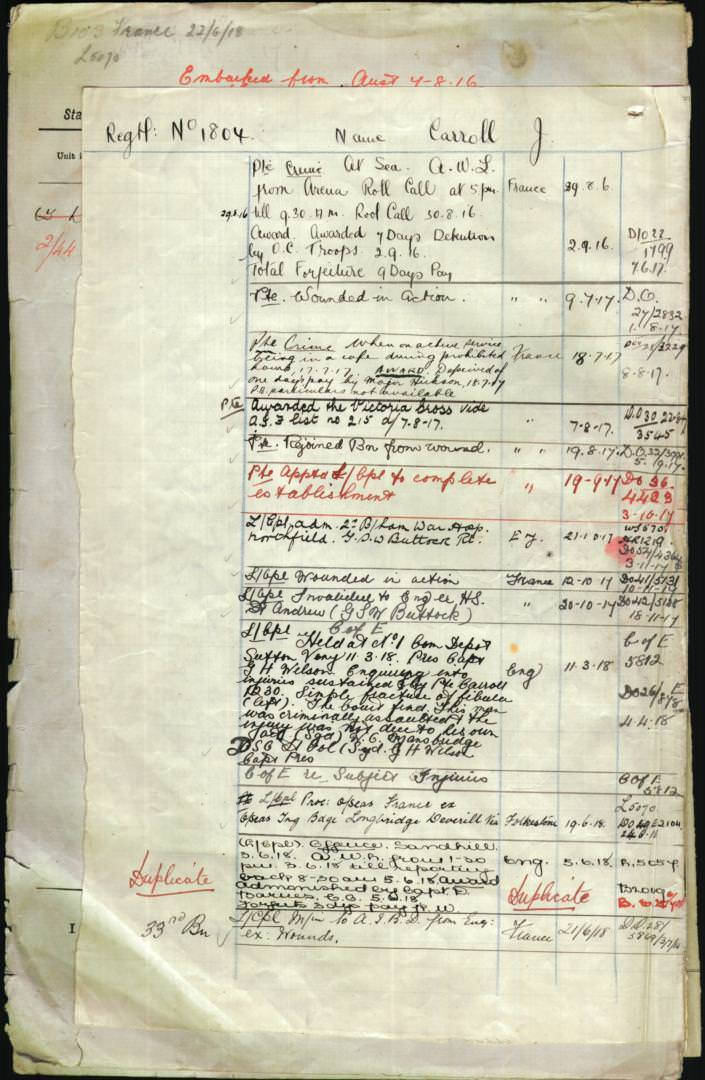
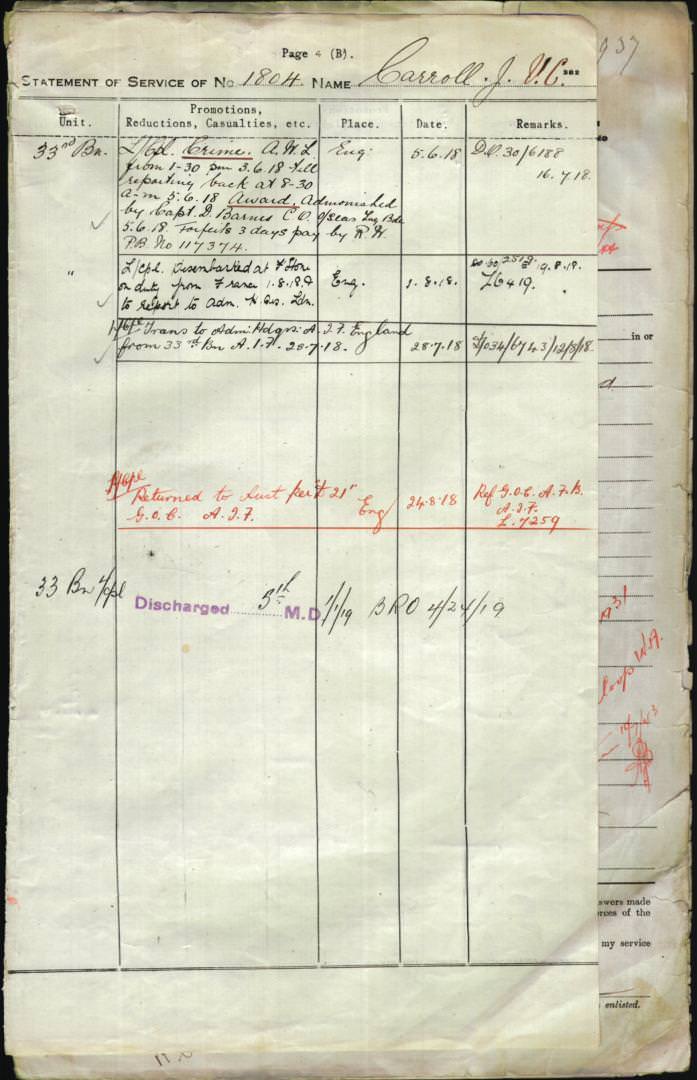
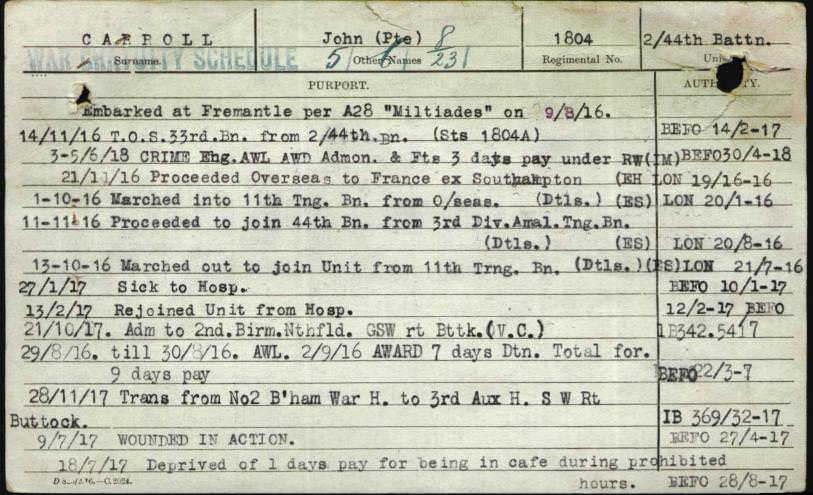
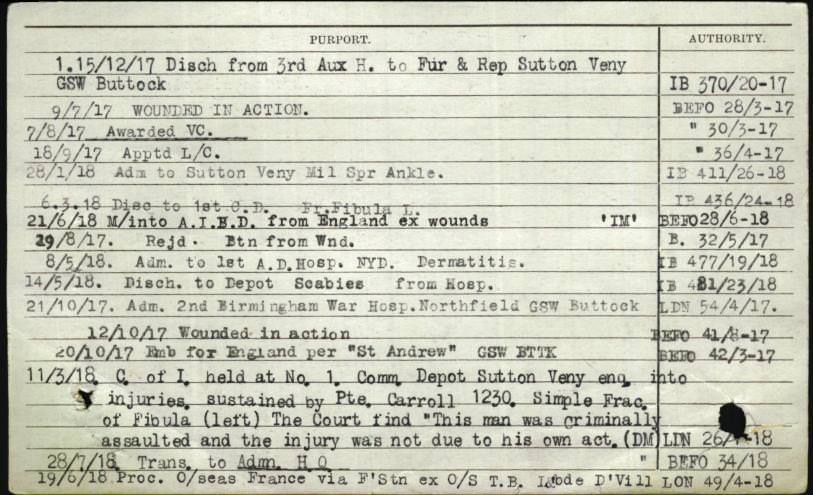
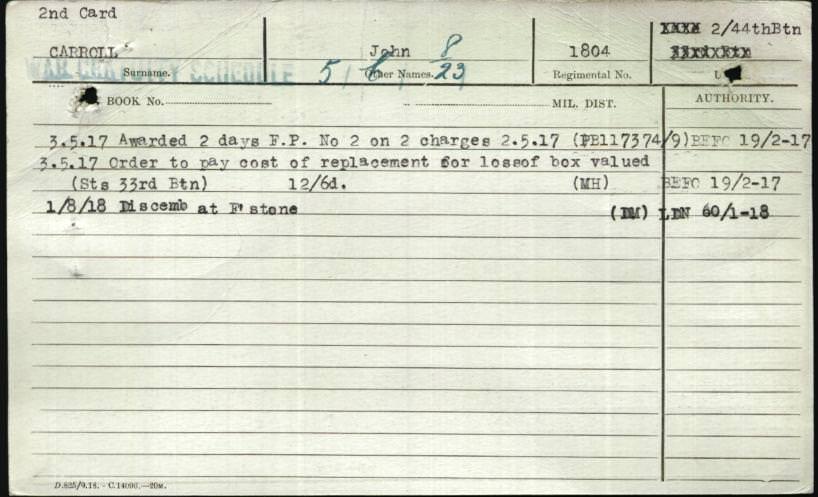
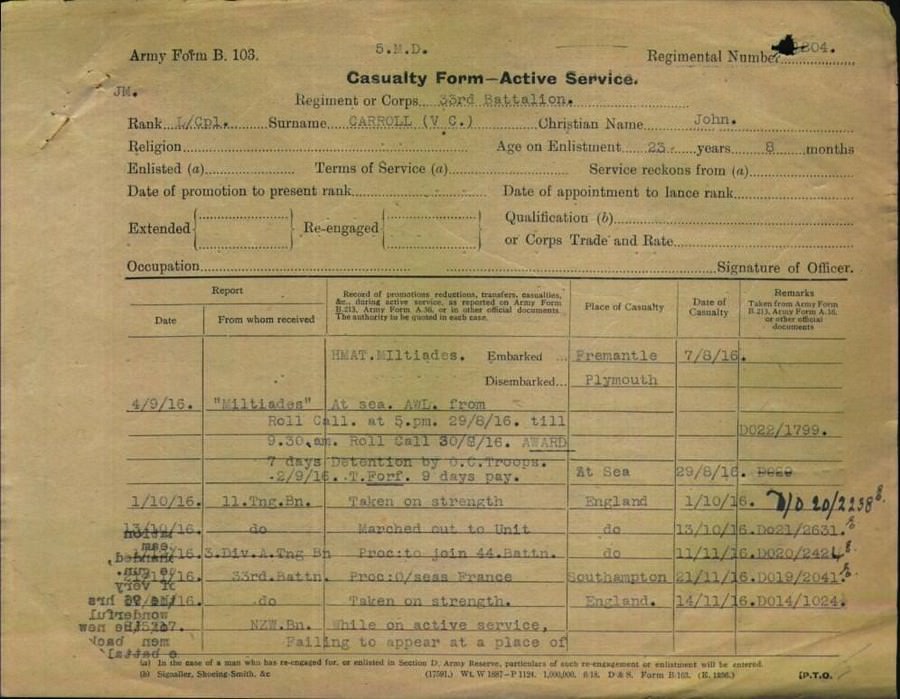


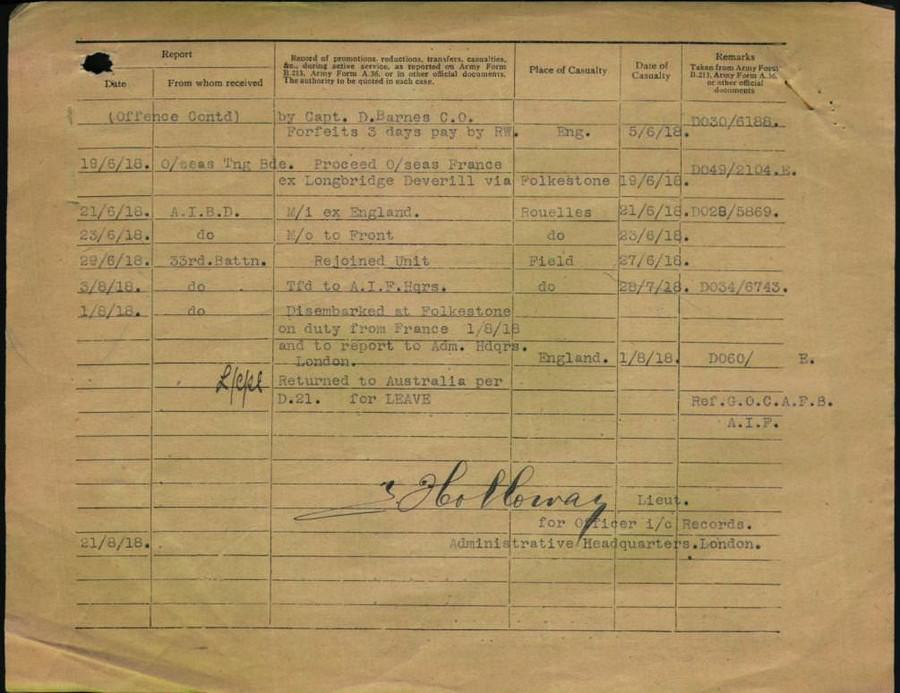
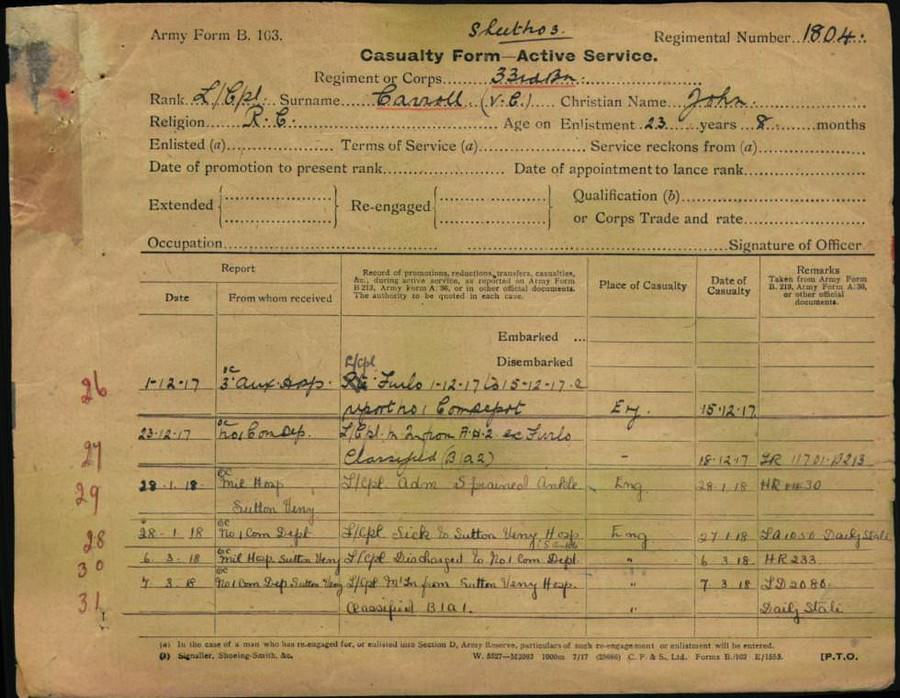

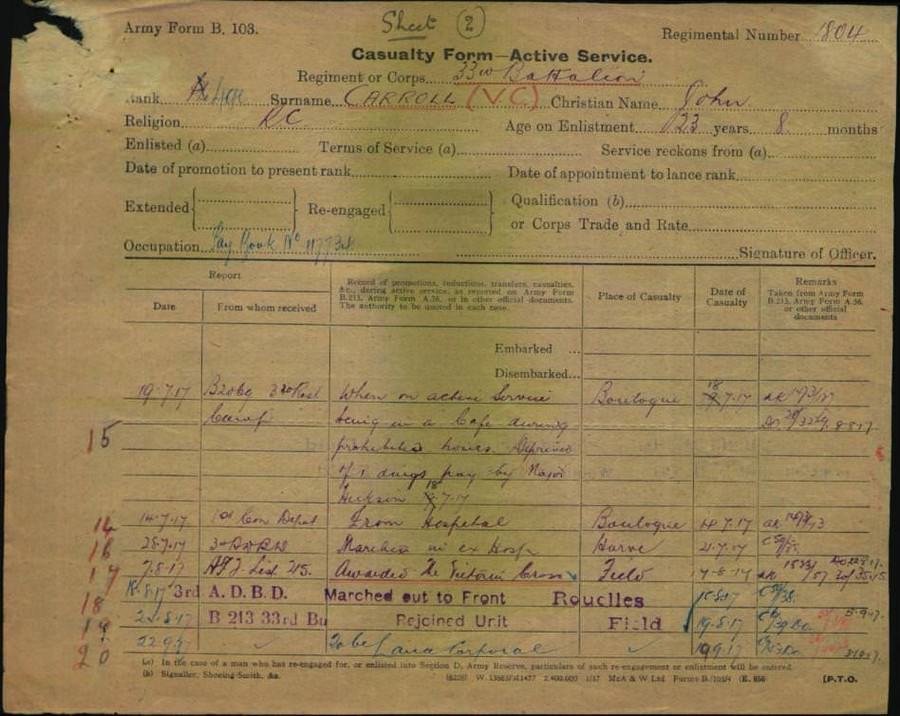
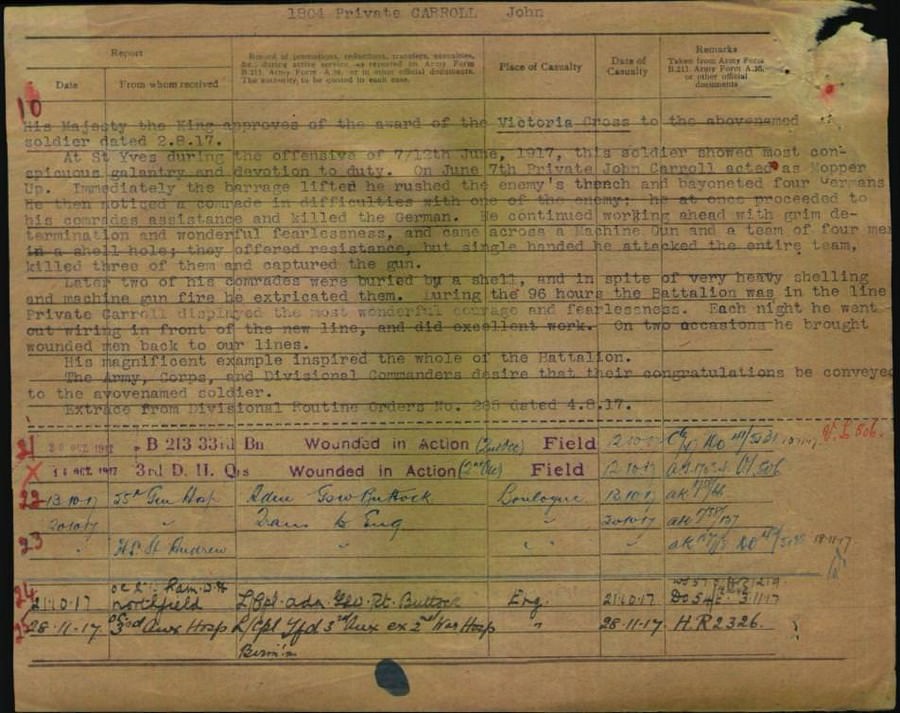
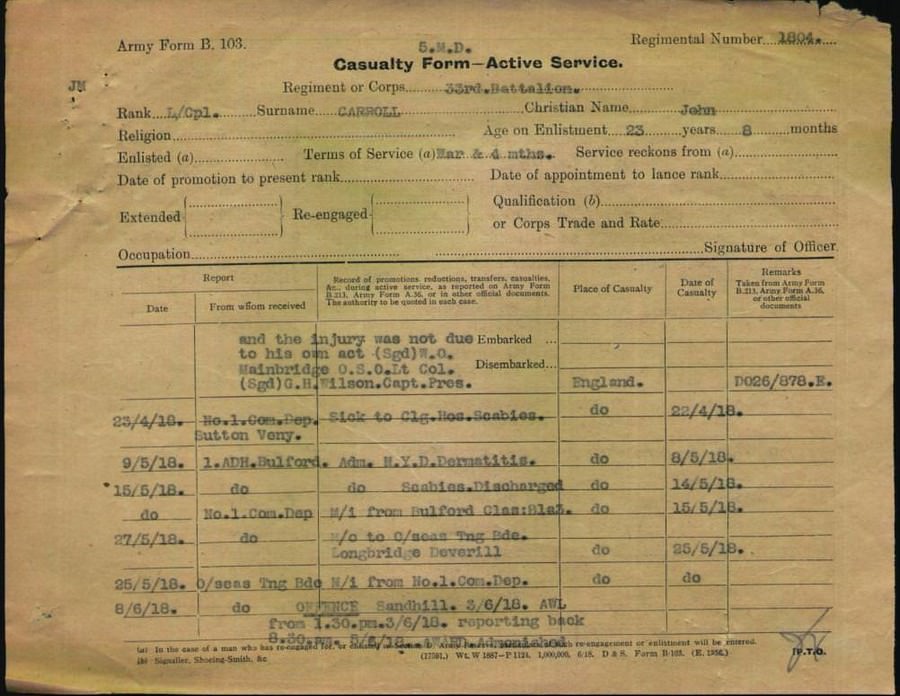
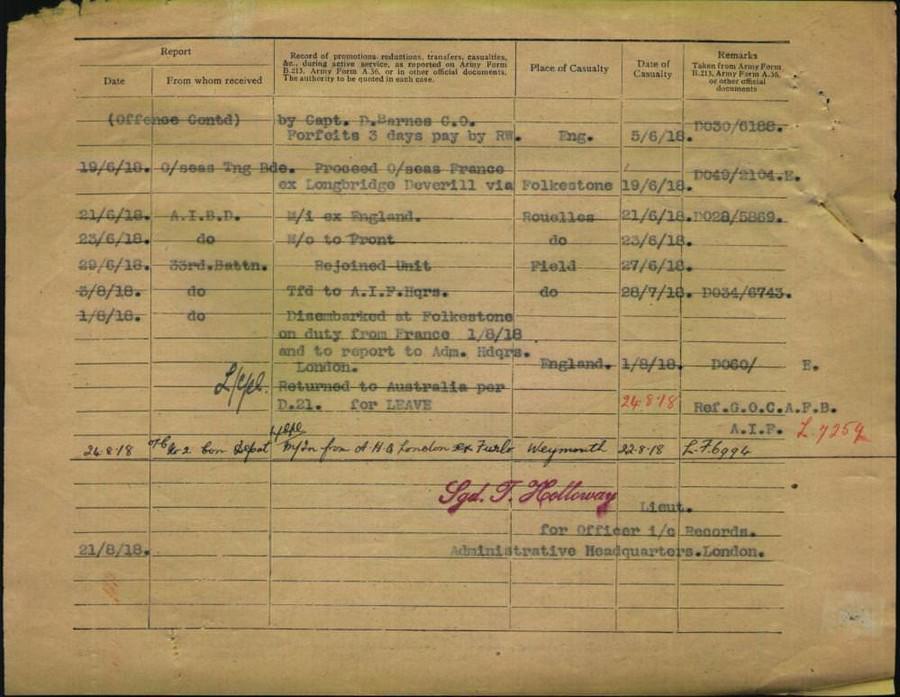
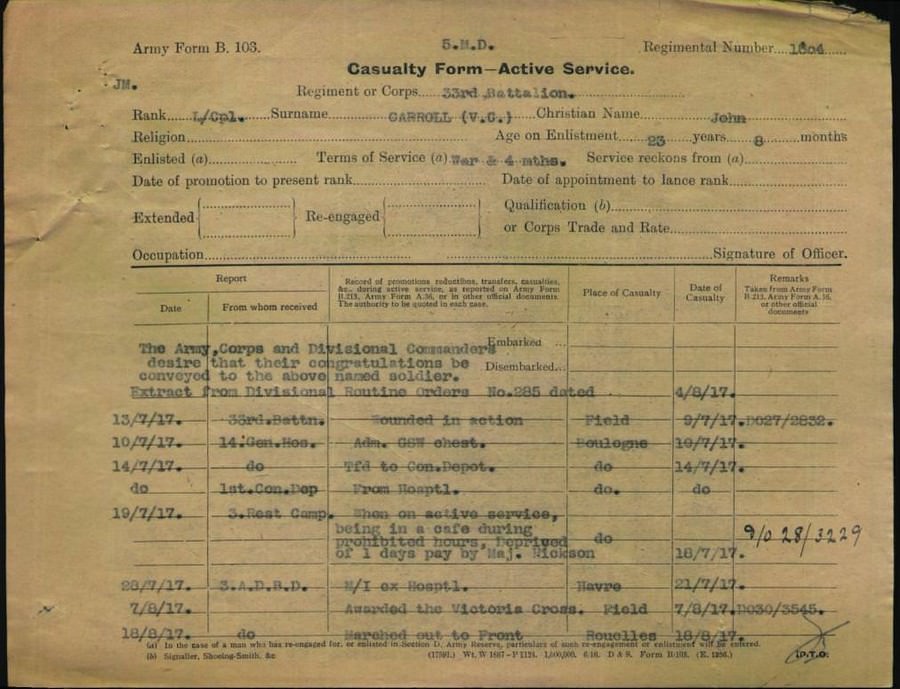
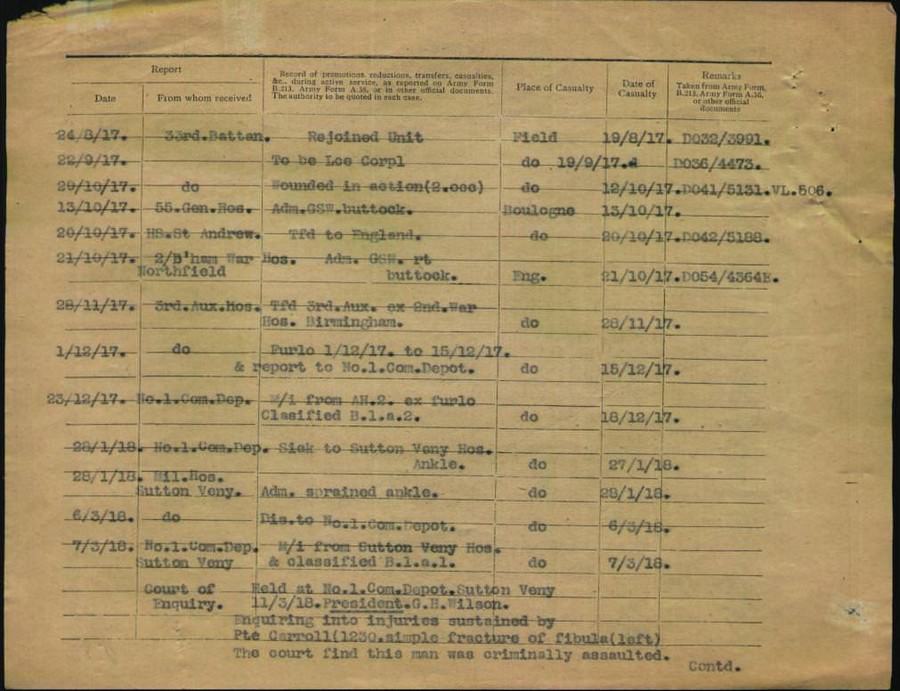
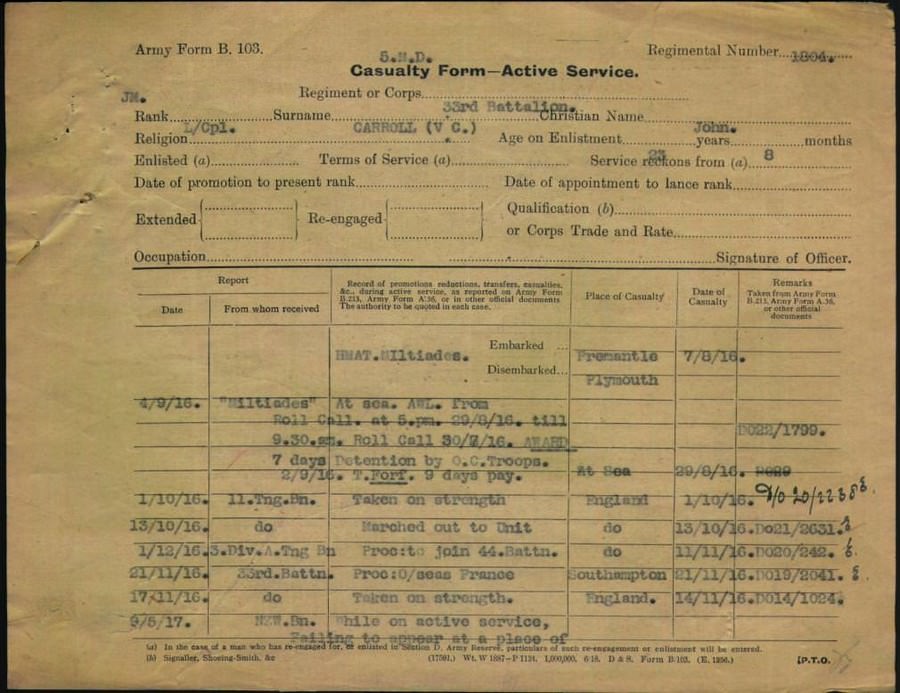
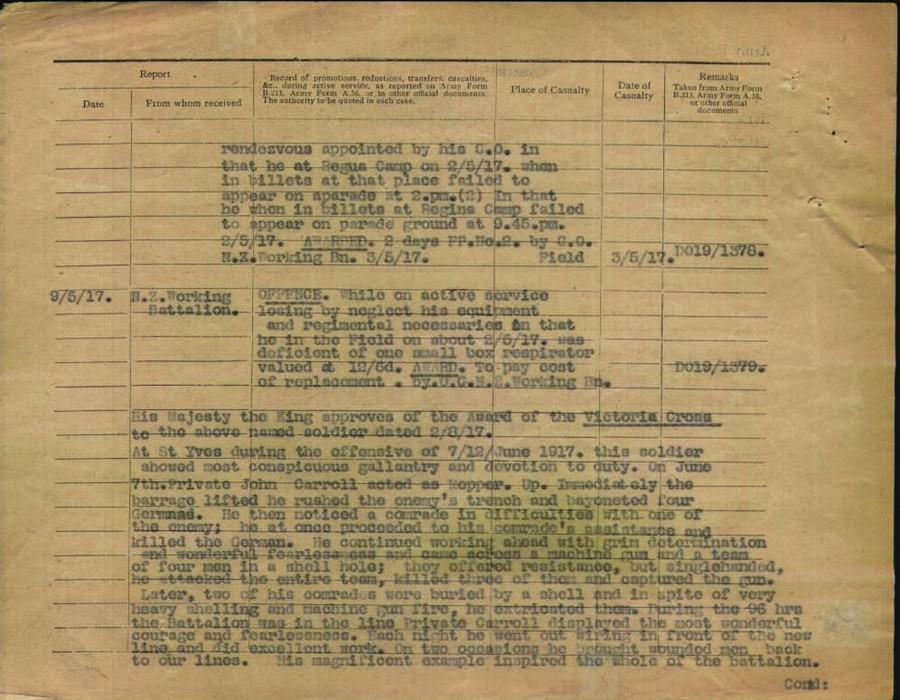
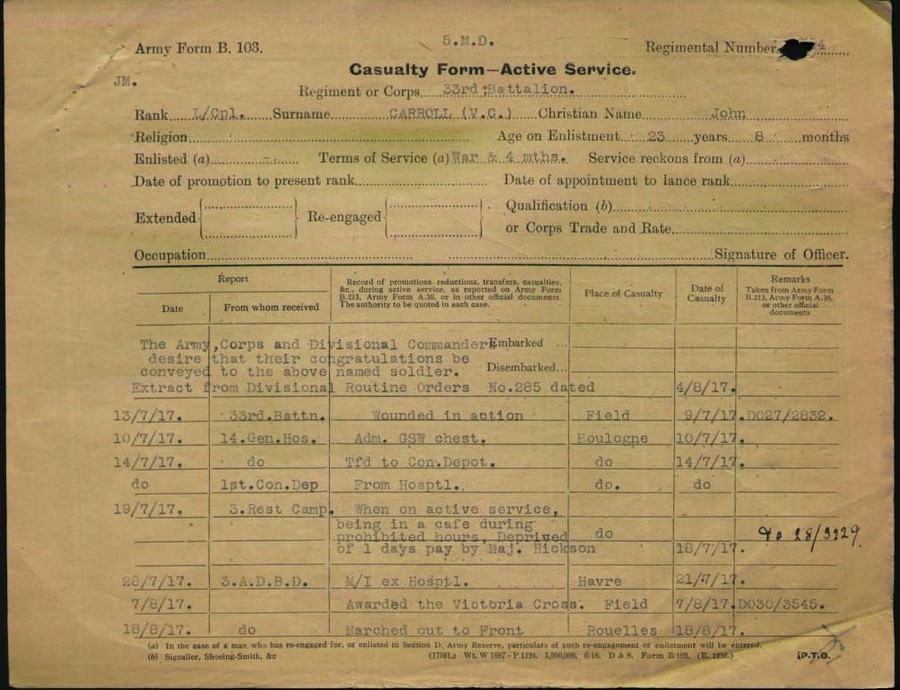
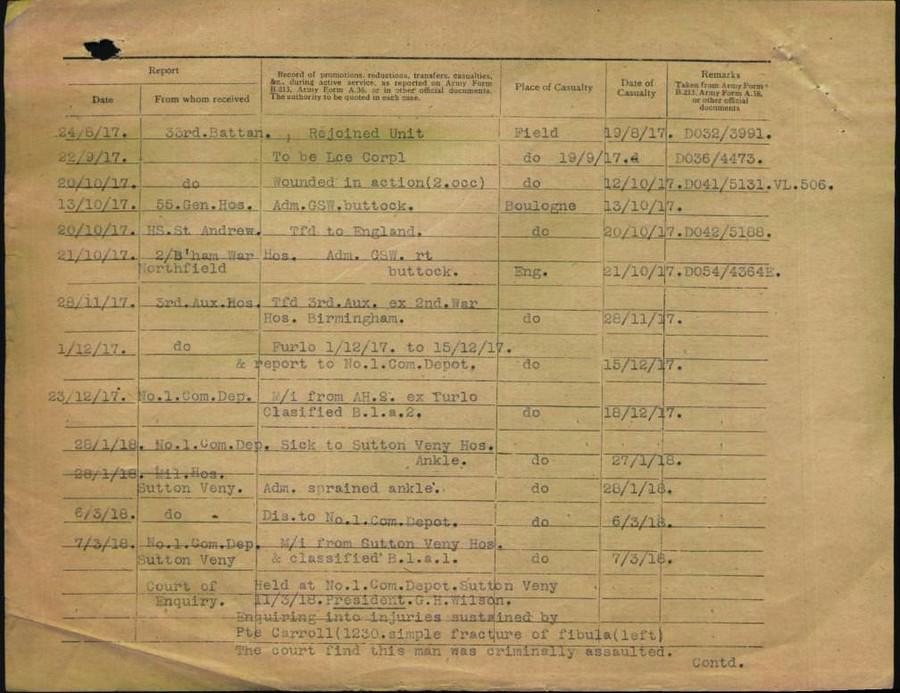

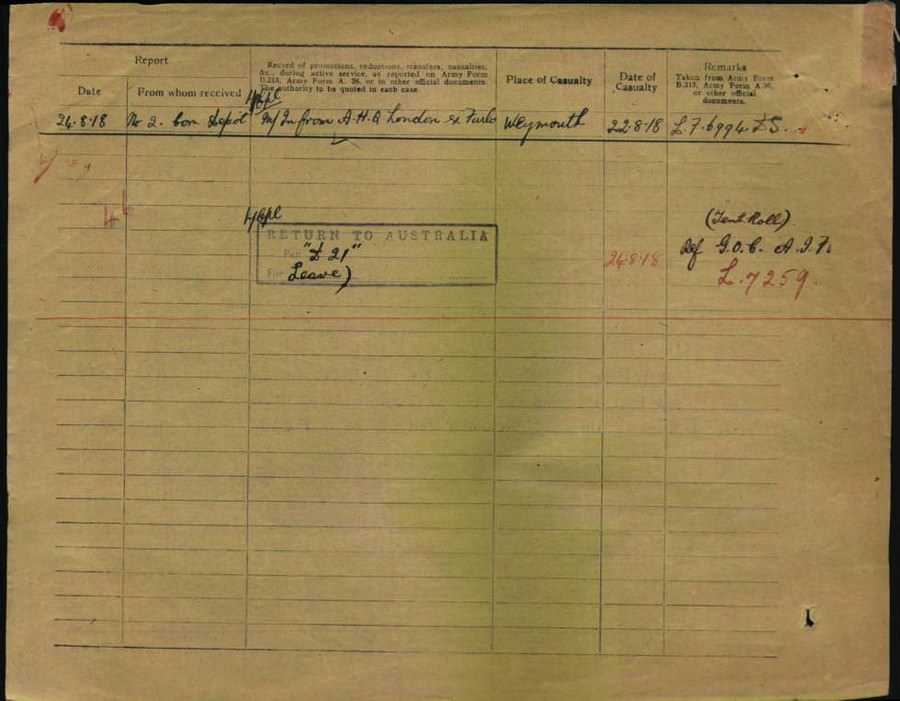

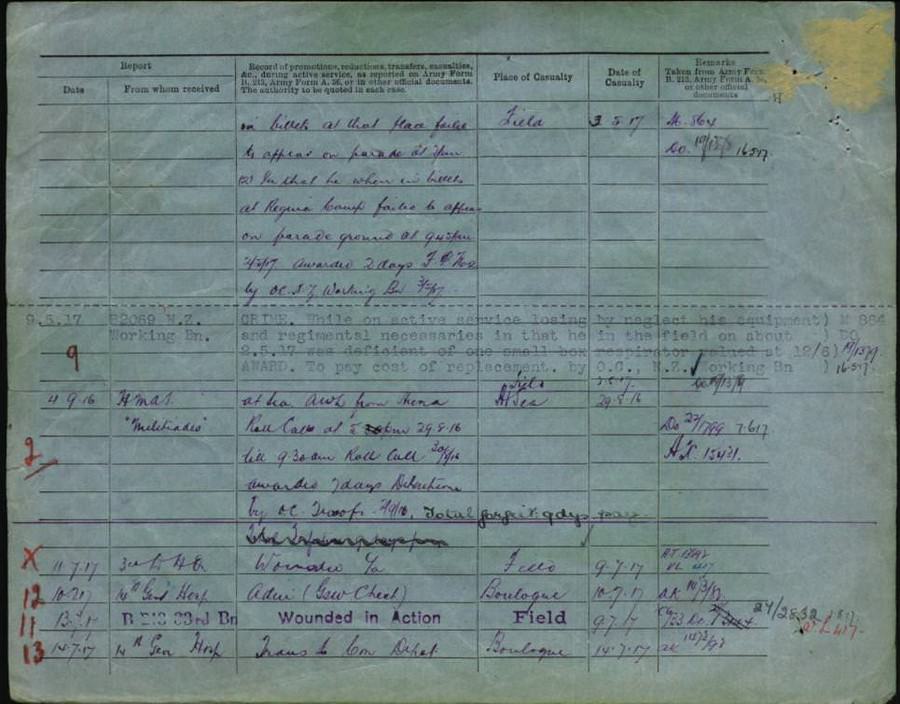

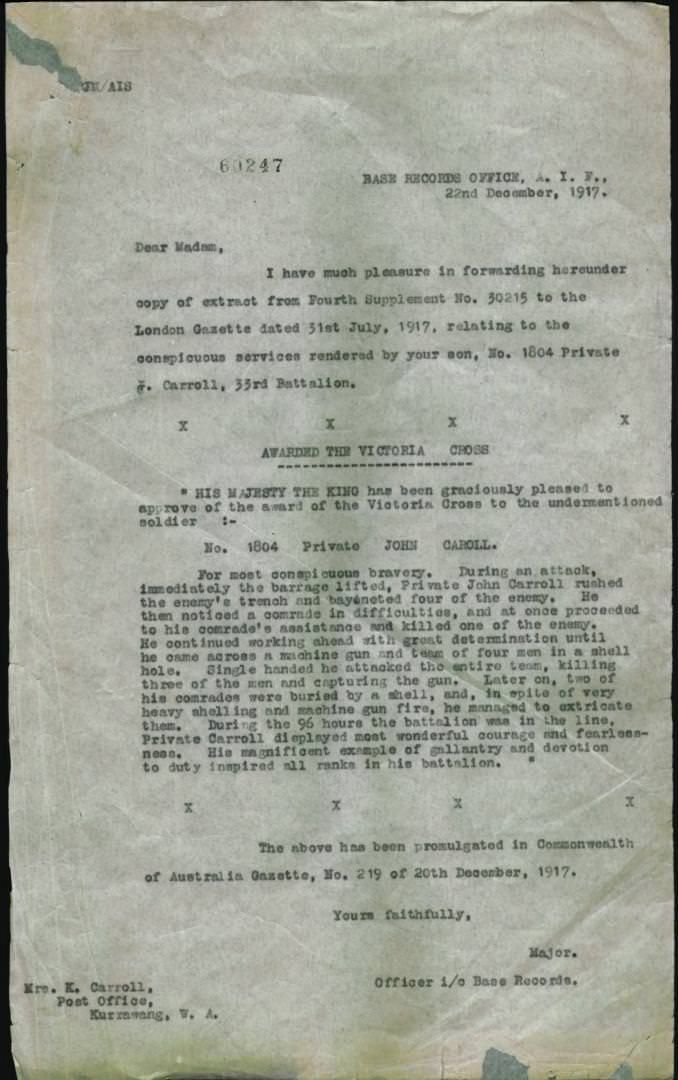
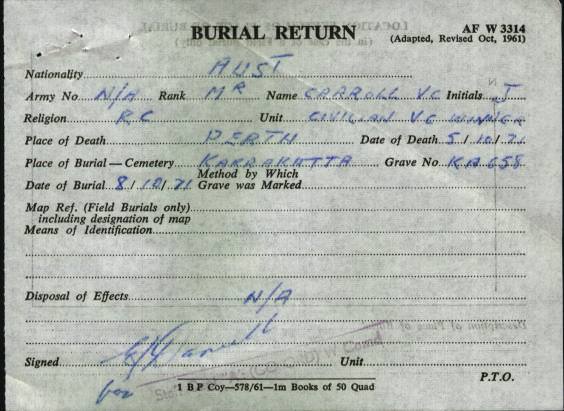
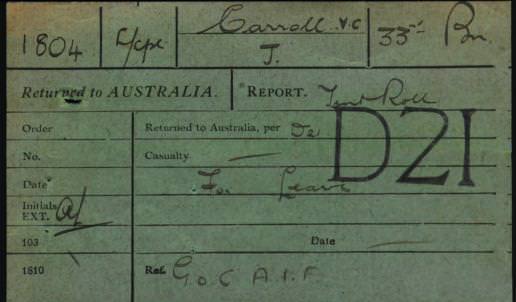

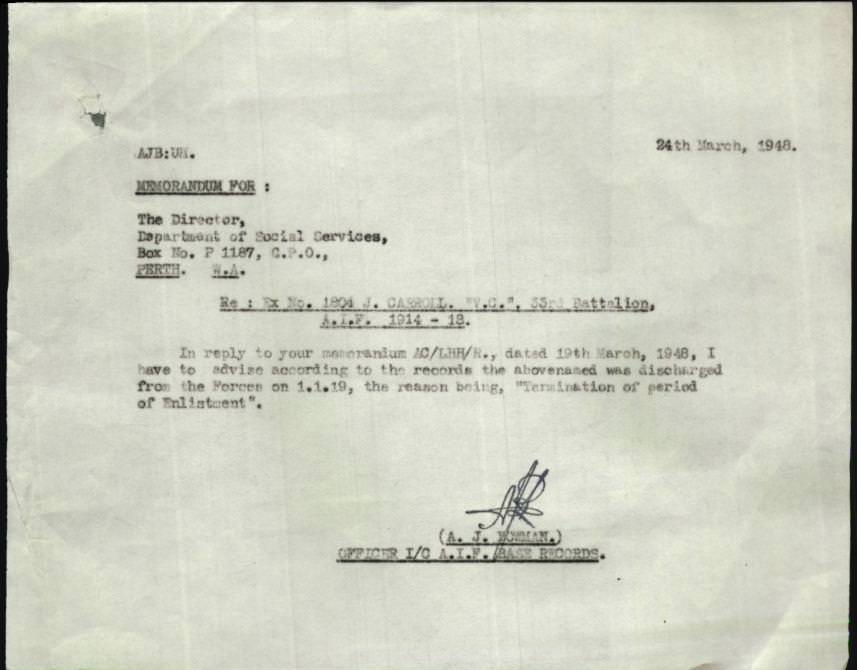
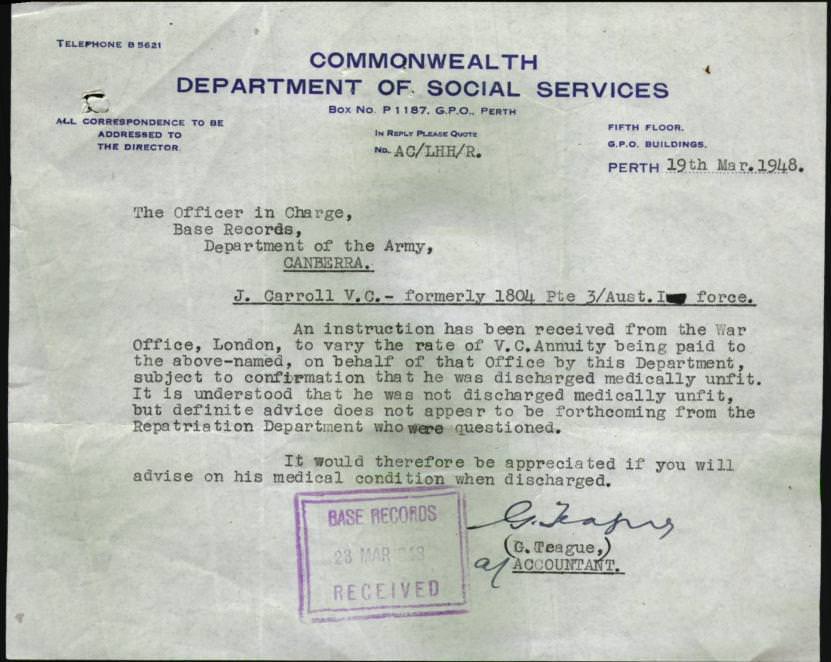
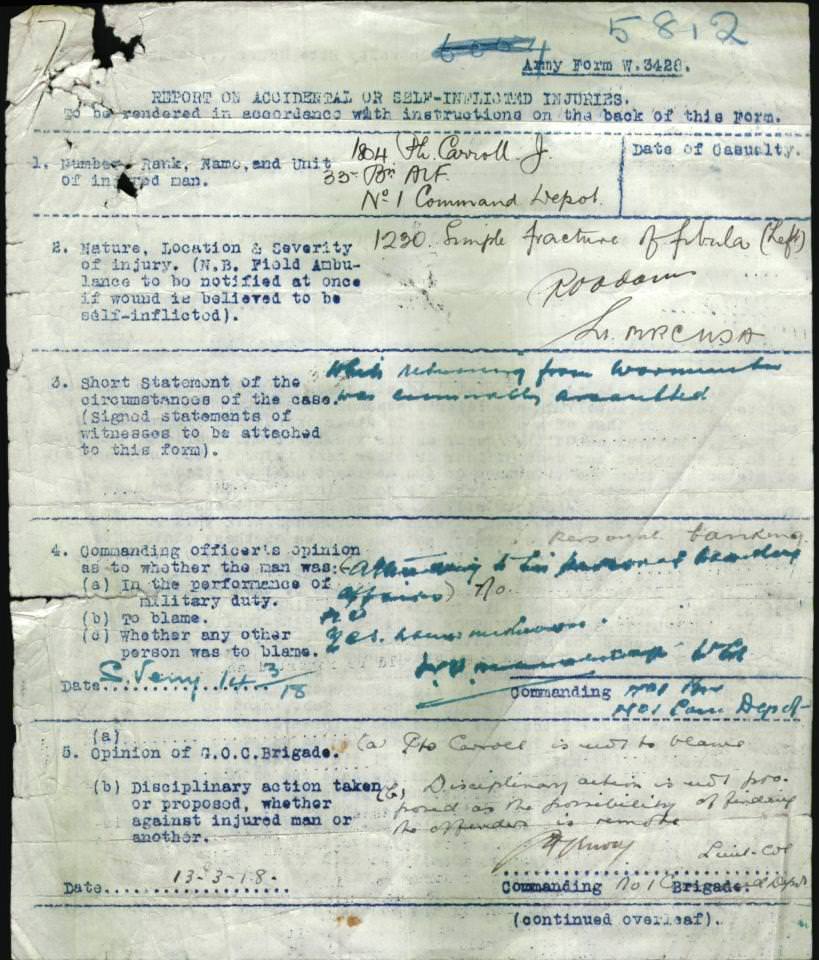
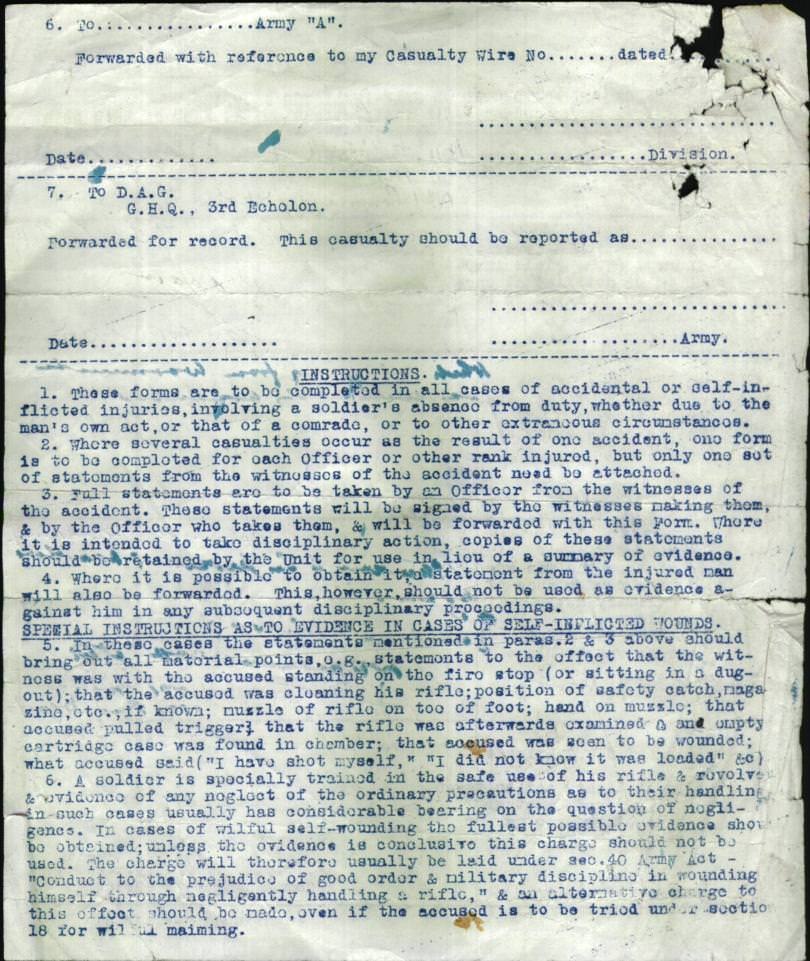
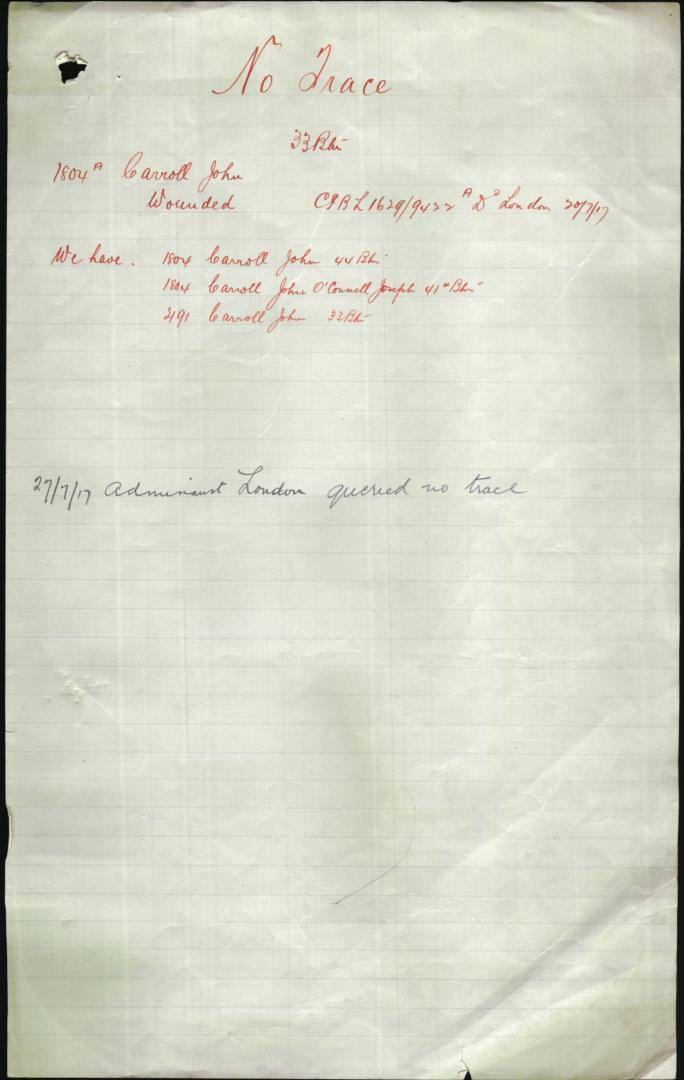
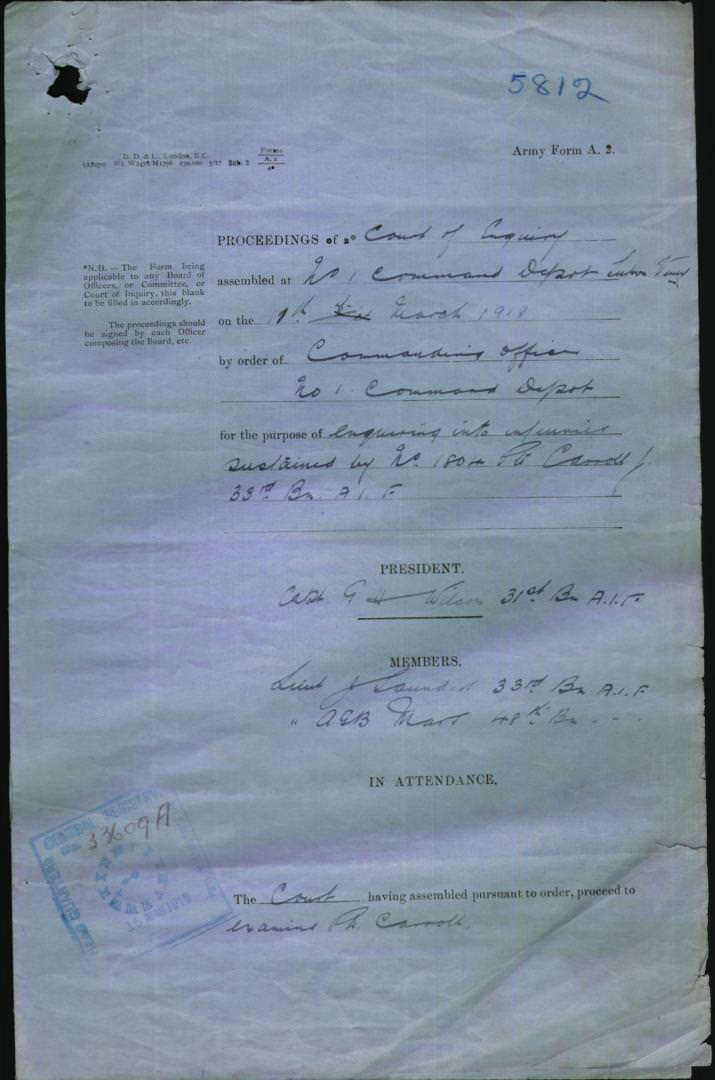
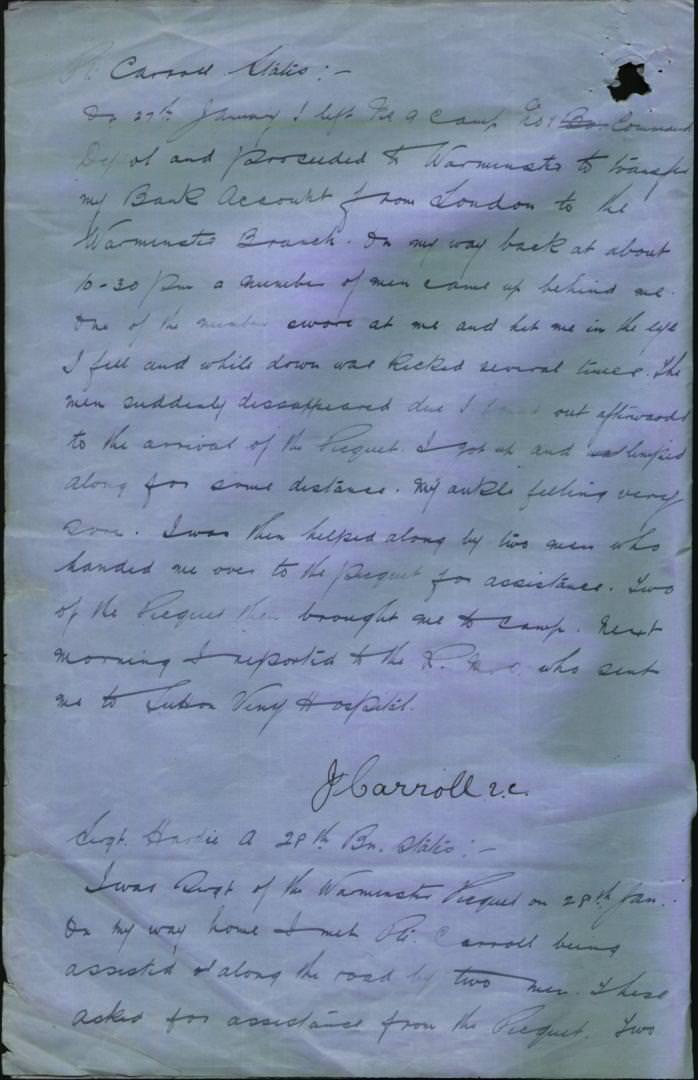
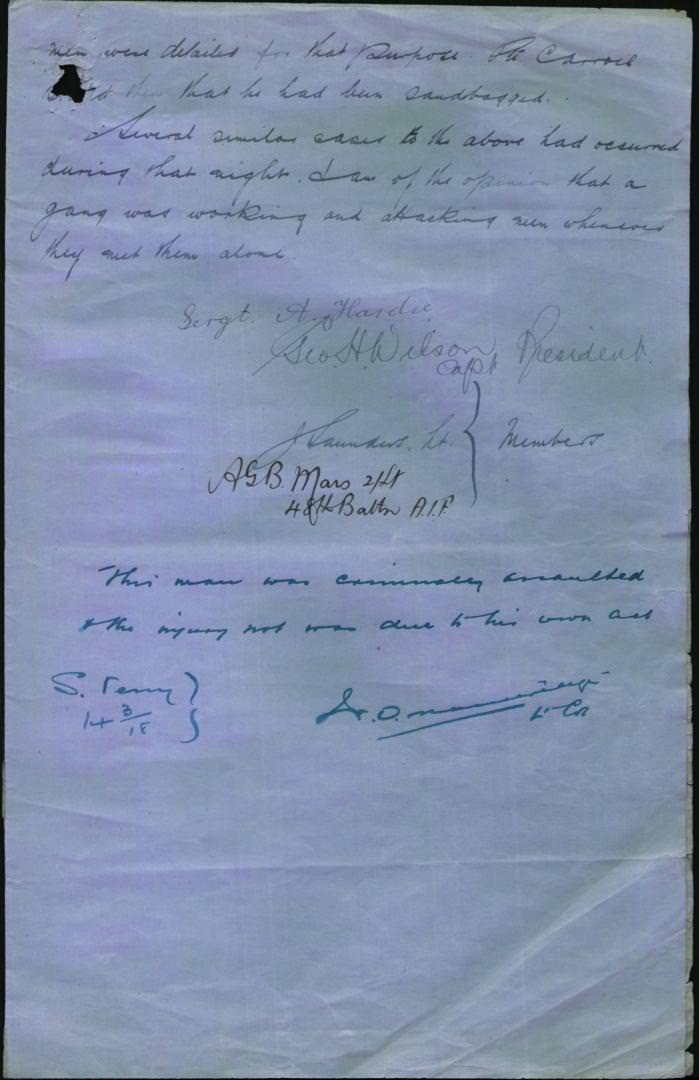
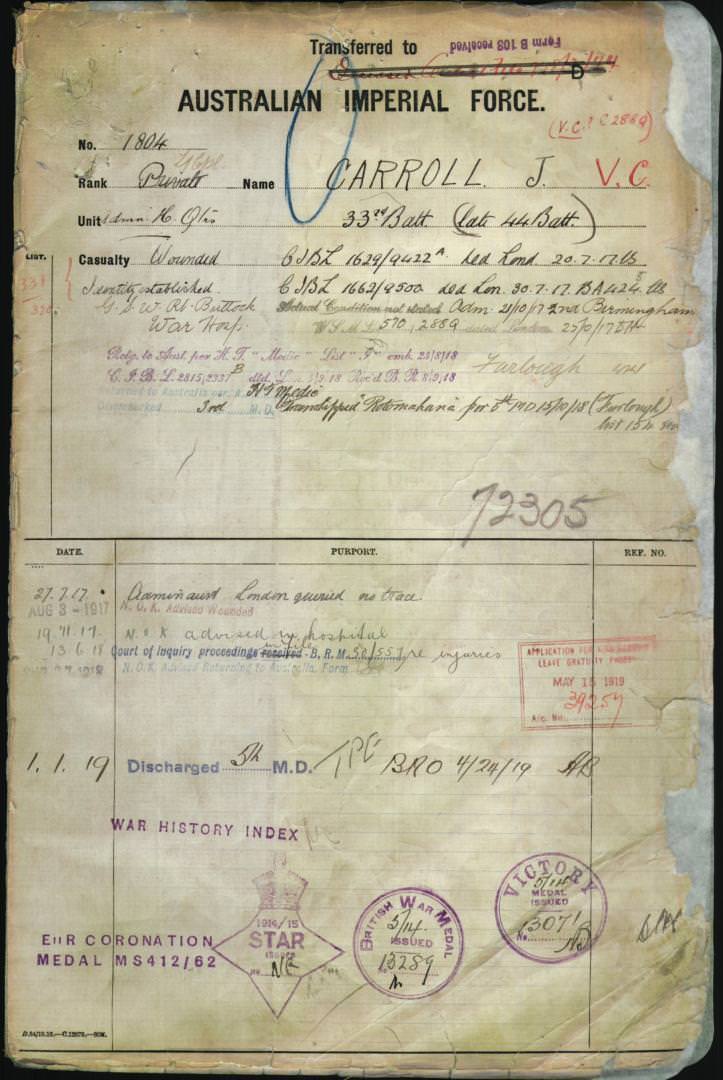
Under construction; 24/05/2007-28/10/2015.